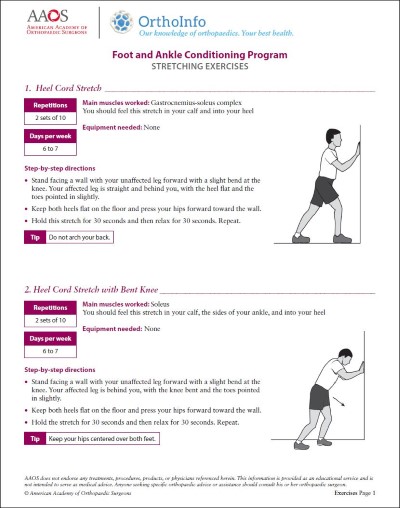Staying Healthy
Footwear Guide
Millions of Americans have trouble with their feet, mostly from wearing improperly fitting shoes. Wearing shoes that are too tight or are not appropriate for your foot shape or size can cause bunions, corns, calluses, and other painful foot disorders. Following some simple recommendations can help ensure that you find the right fit when you buy your next pair of shoes.
Considerations
We're all susceptible to foot and ankle injuries, but we can reduce our risk for them by wearing properly fitting shoes that conform to the natural shape of our feet. In selecting shoes, keep this basic principle of good fit in mind: Your feet should never be forced to conform to the shape of a pair of shoes.
Although style is often a key consideration in choosing a pair of shoes, the most important quality to look for in shoes — from a practical standpoint — is durable construction that will protect your feet and keep them comfortable.
Recommendations for Footwear
The American Academy of Orthopaedic Surgeons has developed the tips below to help people reduce their risk of foot problems:
- Have both feet measured every time you purchase shoes. Your foot size increases as you get older.
- Women should not wear a shoe with a heel higher than 2-1/4 inches. If you do need to wear a high-heeled shoe for work or a social event one day, it is best to wear a low-heeled shoe the next day.
- Try on new shoes at the end of the day. Your feet normally swell and become larger after standing or sitting during the day.
- Shoes should be fitted carefully to your heel as well as your toes.
- Try on both shoes.
- There should be 1/2-inch of space from the end of your longest toe to the end of the shoe.
- Fit new shoes to your largest foot. Most people have one foot larger than the other.
- When you’re in the store, walk around in the shoes to make sure they fit well and feel comfortable. Try to walk on different surfaces, if possible (carpet, marble and wood, for example).
- Sizes vary among shoe brands and styles. Judge a shoe by how it fits your foot — not by the marked size.
- When the shoe is on your foot, you should be able to freely wiggle all of your toes.
- If the shoes feel too tight, don't buy them. There is no such thing as a "break-in period."
- Most high heeled-shoes have a pointed. narrow toe box that crowds the toes and forces them into an unnatural triangular shape. As heel height increases, the pressure under the ball of the foot may double, placing greater pressure on the forefoot as it is forced into the pointed toe box.
Last Reviewed
April 2019
Contributed and/or Updated by
Peer-Reviewed by
AAOS does not endorse any treatments, procedures, products, or physicians referenced herein. This information is provided as an educational service and is not intended to serve as medical advice. Anyone seeking specific orthopaedic advice or assistance should consult his or her orthopaedic surgeon, or locate one in your area through the AAOS Find an Orthopaedist program on this website.







